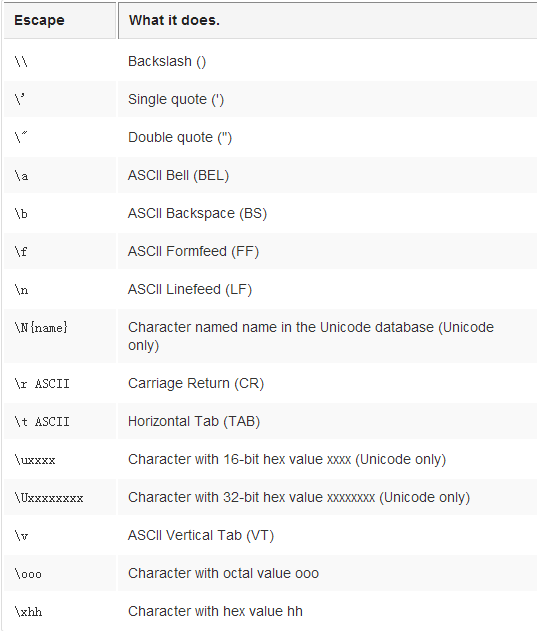1. String类型输出,看示例
x = "There are %d types of people" % 10 binary = "binary" do_not = "don't" y = "Those who know %s and those who %s" % (binary, do_not) z = "Those who know %r and those who %r" % (binary, do_not) print x print y print z print "I said: %r." % x print "I also said: '%s'" % y hilarious = False joke_evaluation = "Isn't that joke so funny?! %r" print joke_evaluation % hilarious w = "This is the left side of..." e = "a string with a right side." print w + e
值得注意的是%r显示一个字符串是带单引号的。
%r是用来debuging的,输出原始数据,就是一个变量是什么就输出什么
以下是输出
There are 10 types of people Those who know binary and those who don't Those who know 'binary' and those who "don't" I said: 'There are 10 types of people'. I also said: 'Those who know binary and those who don't' Isn't that joke so funny?! False This is the left side of...a string with a right side.
2. print的时候,当这行末尾有逗号时,不会换行,例如
end1 = "C" end2 = "h" end3 = "e" end4 = "e" end5 = "s" end6 = "e" end7 = "B" end8 = "u" end9 = "r" end10 = "g" end11 = "e" end12 = "r" print end1 + end2 + end3 + end4 + end5 + end6, #如果没逗号,会输出两行,如果有逗号,会输出在同一行 print end7 + end8 + end9 + end10 + end11 + end12
输出
Cheese Burger
3. Escape Sequences

 View Code
View Code
tabby_cat = "\tI am tabbed in" persian_cat = "I am split \non a line." backslash_cat = "I am \\ a \\ cat" fat_cat = """ I'll do a list: \t* Cat food \t* Fishies \t* Catnip\n\t* Grass """ print tabby_cat print persian_cat print backslash_cat print fat_cat
while True: for i in ["/","-","|","\\","|"]: print "%s\r" % i, #\r表示退格
输出结果
 View Code
View Code
I am tabbed in I am split on a line. I am \ a \ cat I'll do a list: * Cat food * Fishies * Catnip * Grass
